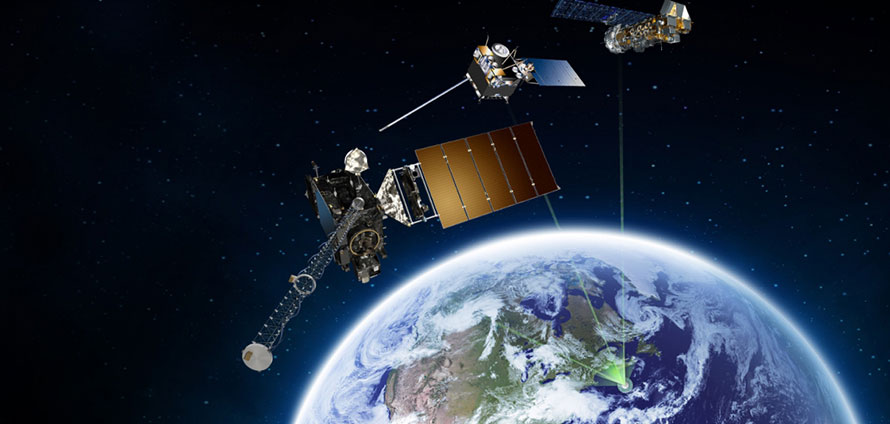Space technologies, techniques and resources used widely and benefiting all on Earth.
 Humanity already benefits greatly from satellites such as the GOES weather satellites and COSPAS-SARSAT search and rescue satellites. Image: NOAA
Humanity already benefits greatly from satellites such as the GOES weather satellites and COSPAS-SARSAT search and rescue satellites. Image: NOAA
DESCRIPTION
The technologies and techniques developed for space settlement will not be limited to space settlements. Rather, as has always been the case, both directly and indirectly they will provide widespread benefits to Earth economies and lifestyles, as well as providing humans with a substantially enhanced ability to protect this planet from the impacts of comets and asteroids.
Some benefits will be realized almost immediately. Others will materialize over longer periods of time.
COMPONENTS (list of benefits)
Anticipated benefits from continued investment in space activities include:
Satellites for Communication. As space platforms increase in size, power, capability and numbers, existing public and private applications (such as direct-to-user-from-orbit TV, radio and data) will be augmented by more and increasingly sophisticated communications services.
Satellites for Global Positioning, Navigation and Timing. The establishment of such resources in space has already revolutionized life on Earth, as entire economies have begun to blossom around location-based services; these uses will proliferate.
Satellites for Remote Sensing. Improved use of space-borne sensors, in orbit or on the Moon, will increasingly be used for such purposes as: better weather monitoring and prediction; locating buried mineral deposits, water, and archaeological sites; tracking crop, agricultural, freshwater, and sea conditions; understanding geological conditions; and, eventually, detecting imminent earthquakes.
Commercial Use of the Space Environment. New products and knowledge will come from orbital research and orbital manufacturing facilities utilizing the vacuum and weightlessness available only in space. Production of unique pharmaceutical and biological materials in space has been demonstrated by several companies already.
Biomedical Knowledge from the Space Environment. Observations and experiments in weightlessness have provided crucial medical insights and breakthroughs, as well as revolutions in medical monitoring. Continued breakthroughs are to be expected, especially with respect to the conditions of human aging.
Ecology. People living in space and on other worlds will need to conserve and recycle resources to a greater extent than we do on Earth. The technologies and system improvements developed should have widespread applicability to living on Earth.
Agriculture. Space settlements will help drive the development of super-efficient, super-productive agricultural methods that can applied worldwide on Earth to ease hunger and increase the local production of food in urban areas.
“Spin-offs.” What is designed for space application will challenge and inspire thousands of young minds and will find thousands of new applications on Earth. That has always been the case with investment in space. After building spacecraft, scientists and engineers looked at the thousands of specialized small parts they created, that would not have existed but for the focused goal of space exploration (and the need to preserve priceless human cargo), and then found new on-Earth uses for them. In that process they created dozens of new industries and thousands of new jobs on Earth. Those benefits were in addition to benefits in the space industry itself and in addition to the ordinary multiplied effects of any government or industry spending. Similar benefits will continue to arise from future space development.
Extra-Terrestrial Raw Materials. The Moon and the asteroids contain metals and other materials that are rare on Earth, e.g. platinum. As space technologies are developed and the human presence increases beyond Earth orbit, transportation costs will come down and allow the harvesting of these resources and their return to Earth, or their use in space. Starting in 2012, asteroid mining companies have been founded and various countries have shown real interest in the concept.
Power from Orbit. Building a system of solar power satellites in Geosynchronous Earth Orbit can supply clean power to the whole world. Space solar power is covered in more detail in Milestone 17
Sunlight from Orbit. It may be possible to use giant mirrors in orbit to, for example, increase the food supply and/or provide illumination in dark areas.
MORE OF THE NSS ROADMAP TO SPACE SETTLEMENT:







